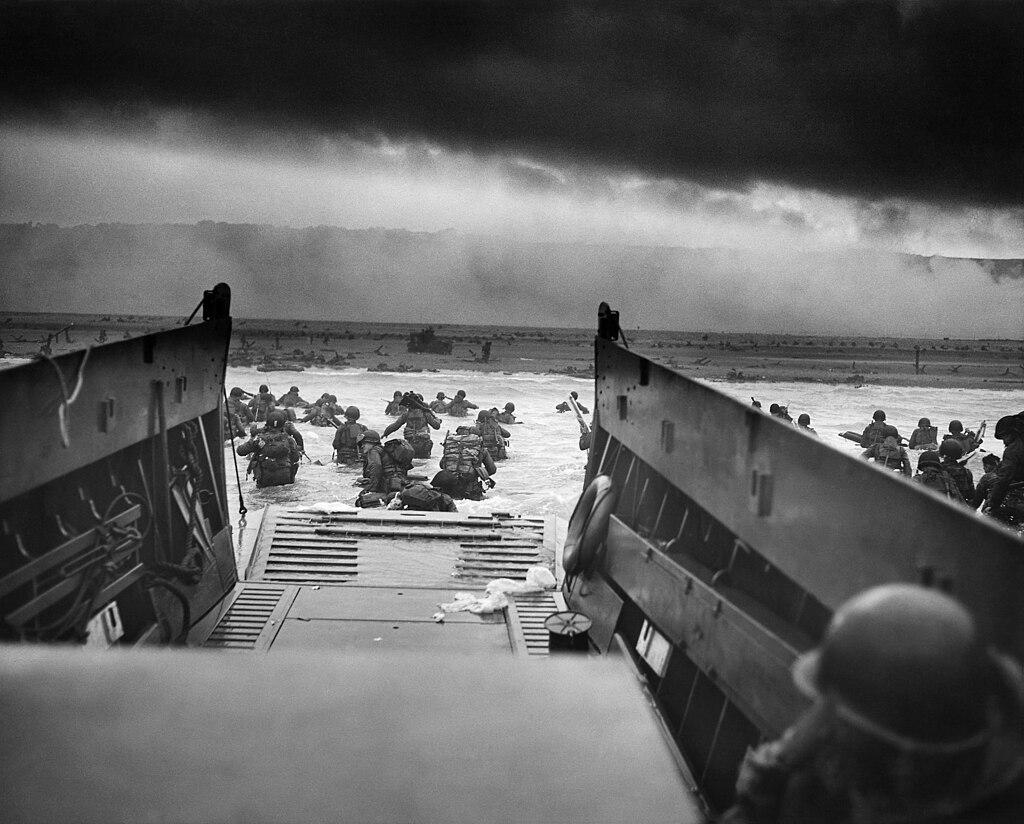Celebrating 80 years since D-Day

80 years ago, the Second World War was raging across Europe. Having previously been forced into retreat and barely having rescued their forces from Dunkirk in 1940, D-day marked the final grand offensive that would win the Second World War.
On 6 June 1944, the Allied Forces pushed back into Nazi-occupied Europe in an operation codenamed ‘Overlord’. The assault began with an aerial assault with troops being parachuted into drop zones across northern France, followed by ground troops assaulting five Normandy beaches, ferried across the English Channel and North Sea by a force of over 7000 naval vessels that also bombarded the coastal defences with artillery support.
Operation Overlord meant Nazi Germany faced a war on two fronts against the Allied Forces now pressing in from their bridgehead in Normandy and the Soviet Union in the East.
D-Day had been four years in the planning with a combined British, American and Canadian taskforce submitting final plans as early as July 1943, although detailed planning did not begin until later that year.
Fabricated campaigns were dreamt up and documented to confuse enemy intelligence services and draw Nazi forces away from Normandy to protect other anticipated targets. British factories stepped up production and around 9 million tonnes of supplies and equipment crossed the Atlantic from North America to Britain in the months leading up to D-Day together with a force of 1.4 million American servicemen and a substantial Canadian force, ready to push back into Europe as part of a 2 million strong invasion force from over 12 countries.
As early as December 1941, the Western Allies’ principal aim was completely to defeat Germany by forcing German forces to contend with a war on two fronts – in France and against the Soviet Union. A successful invasion would drain German resources and deny them access to key military sites while securing a bridgehead in Normandy would allow the Allies to establish a viable presence in northern Europe for the first time since the Allied evacuation from Dunkirk in 1940.
It is important to remember that D-day itself was only the beginning of a 3-month campaign codenamed Operation Overlord to take back Normandy against fierce resistance. The ‘D’ in D-Day stands simply for ‘day’, and the term was used to describe the first day of any large military operation. It is often used in military operations in place of an actual date when the date is yet to be determined or secret. The Western Allies had to fight hard over each and every town and country lane. Victory came at great cost, but despite superior technology, even battle-hardened enemy troops were eventually overwhelmed and driven back.
Within 3 months of D-day, the Nazi forces were in full retreat from France. After a failed counter-offensive in Ardennes at the end of 1944 and with Soviet troops pressing and draining resources on the Eastern Front, resistance finally began to crumble.




Leave a Comment (note: all comments are moderated)